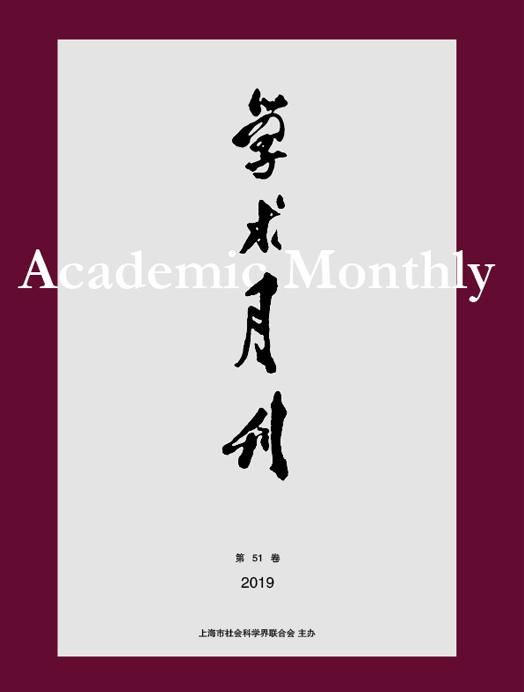Citation:
Dianfan YU, Hong JIANG and Lei CHEN. The Non-linear Relationship between Automated Capital Biased Technical Change and Employment[J]. Academic Monthly, 2022, 54(9): 60-72.

The Non-linear Relationship between Automated Capital Biased Technical Change and Employment
-
Abstract
Based on data of the listed manufacturing companies from 2012 to 2019, this paper theoretically analyzes and empirically tests the impact and internal mechanism of automated capital-biased technical change on the total employment and structure. The research found: (1) There is a U-shaped non-linear relationship between the automated capital-biased technical change and total employment, and the impact of the technical change on the employment of high- and low-skilled labor is inverted U-shape and U-shape respectively. (2) Enterprise productivity and output scale play a non-linear effect on the impact of automated capital-biased technical change on the total employment and labor skill structure. For the sample in this paper, automated capital-biased technical change has produced a creative effect on the employment of high-skilled labor through the productivity improvement effect and the scale reduction effect, while which reduce total employment and the low-skilled labor force. Therefore, improving the skill level of low-skilled labor, vigorously cultivating high-skilled labor, strengthening the skill matching of automation capital-biased technical change with labor force, and exploring in-depth the positive role of productivity and scale effects for development of automation technology are important measures to achieve stable employment and promote high-quality employment.
-

-
References
-
Access
-
-
[1]
Chunguang WANG
. Rural Non-Employment Income and the Possible Future Picture of Chinese Rural Modernization. Academic Monthly,
2022, 54(12): 128-140.
-
[2]
Liming ZHENG
, Ming LI
, Degang LI
. Innovation-oriented Tax Cuts and Employment Structure Upgrade. Academic Monthly,
2021, 53(6): 87-98.
-
[3]
YUAN Xiaoyan
. City Size,Service Development and Female Migrants Employment. Academic Monthly,
2023, 55(9): 58-67.
-
[4]
,
. . Academic Monthly,
2017, 49(07): 58-67.
-
[5]
XIA Yiran
. Learning Effects in Flexible Employment— A Case Study of Takeaway Riders. Academic Monthly,
2023, 55(5): 45-52.
-
[6]
,
. . Academic Monthly,
2017, 49(12): 103-111.
-
[7]
,
. . Academic Monthly,
2016, 48(08): 52-60.
-
[8]
JIA Wenjuan
. The Body of Labor, the Mind of Capital——Self Capitalization and the Formation of the Laborers Ideology in Late Neoliberalism. Academic Monthly,
2023, 55(12): 112-121.
-
[9]
YU Jianxing
. Beyond Technology Empowerment: How Can Governance Model Be Reshaped in Digital Reform. Academic Monthly,
2023, 55(11): 73-83.
-
[10]
. . Academic Monthly,
2017, 49(08): 51-57.
-
[11]
Peng LYU
, Fan FU
. Organic Embedding of Capital: Taking an Agricultural Industry Poverty Alleviation Project as a Key Case. Academic Monthly,
2022, 54(7): 138-148.
-
[12]
. . Academic Monthly,
2016, 48(02): 127-138.
-
[13]
Xin LIU
, Feng TIAN
. Grassroots Party Building and the Creation of Social Capital in Chinese Urban Communities. Academic Monthly,
2021, 53(6): 160-170.
-
[14]
Peiguo ZHANG
. Rethinking on the Paradigm of “Capitalist Germination”. Academic Monthly,
2021, 53(12): 168-181.
-
[15]
Yanjing ZHAO
, Tao SONG
. The Optimal Discount Rate of the Capital on the Perspective of Capital Competition. Academic Monthly,
2022, 54(5): 60-70.
-
[16]
Ping FU
. Creating Leading-edge Integrated Governance: The Governance Innovation of Poverty Alleviation in China. Academic Monthly,
2021, 53(7): 121-131.
-
[17]
,
. . Academic Monthly,
2016, 48(01): 87-100.
-
[18]
Lin QI
. The Path of Technology-oriented and the Construction of Art Theory. Academic Monthly,
2021, 53(7): 151-160.
-
[19]
Dong YANG
, Zishuo LI
. Regulating Technology Giants: A Re-Examination of Technical Power as a Factor in the Determination of Market Dominant Position. Academic Monthly,
2021, 53(8): 92-105.
-
[20]
,
. . Academic Monthly,
2016, 48(10): 67-76.
-
-




 沪公网安备 31010102003103号
沪公网安备 31010102003103号 DownLoad:
DownLoad:
